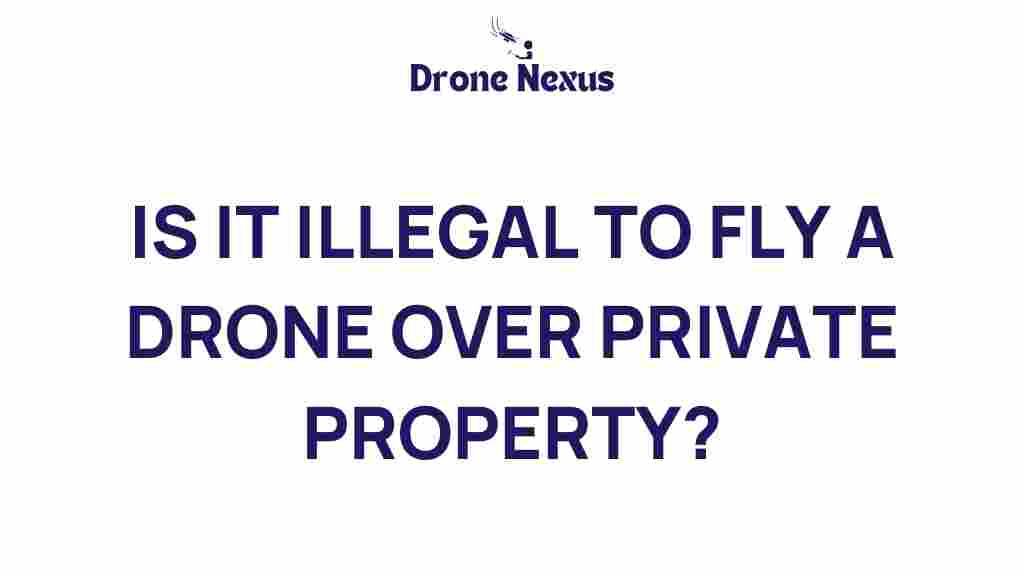Is It Illegal to Fly a Drone Over Private Property? Understanding Drone Laws
As the popularity of drones continues to soar, so too does the complexity of the laws governing their use. One of the most frequently asked questions among drone enthusiasts and casual flyers alike is: Is it illegal to fly a drone over private property? The answer is nuanced, involving a careful consideration of drone laws, property rights, and local regulations. In this article, we’ll unpack the controversy surrounding drone usage over private property, providing clarity and guidance for drone operators.
Understanding Drone Laws
Drone laws vary significantly from one country to another, and even between states or municipalities. Generally, drone laws are designed to ensure safety, privacy, and respect for property rights. Here are a few fundamental aspects to consider:
- Federal Regulations: In the United States, the Federal Aviation Administration (FAA) governs the operation of drones. They require drone operators to adhere to specific flight rules, including staying below 400 feet, flying within visual line of sight, and avoiding restricted airspace.
- State and Local Laws: Many states and municipalities have enacted their own laws regarding drone usage. These laws can address issues such as flying over private property, privacy concerns, and noise ordinances.
- Property Rights: In general, property owners have rights to the airspace above their land, but this is not absolute. The concept of “navigable airspace” allows for certain types of aerial activity, including drone flights.
The Legal Framework for Drones
To navigate the complexities of drone laws, it’s essential to understand the legal framework that governs airspace and property rights. The primary components include:
- Airspace Rights: The FAA regulates the national airspace system, which includes navigable airspace. While property owners have rights to the airspace directly above their land, this generally extends only to a reasonable height.
- Privacy Concerns: Some states have enacted laws specifically addressing privacy issues related to drones. For instance, flying a drone to capture images or videos of someone on their private property could lead to legal repercussions.
- Local Ordinances: Cities and towns might have specific regulations that restrict drone flights in certain areas, such as parks, residential neighborhoods, or near schools.
Key Considerations When Flying Drones Over Private Property
When contemplating flying a drone over private property, several factors come into play. Here are essential considerations to keep in mind:
1. Know the Local Drone Laws
Before you take to the skies, it’s crucial to familiarize yourself with local drone laws. Many regions have specific regulations that address flying drones over private property. Check local ordinances or consult legal resources to ensure compliance.
2. Respect Property Boundaries
While federal law allows for drone access to navigable airspace, it’s wise to respect property boundaries. This respect fosters goodwill and reduces the risk of confrontation with property owners.
3. Privacy Matters
Be mindful of privacy issues. Flying a drone with a camera over someone’s property can lead to allegations of invasion of privacy. Always consider the implications of capturing images or videos of private spaces.
4. Seek Permission
When in doubt, it’s best to seek permission from the property owner before flying over their land. This practice not only helps avoid legal issues but also builds positive relationships with the community.
Step-by-Step Process for Flying Drones Responsibly
Here’s a step-by-step process to follow for responsible drone flying:
Step 1: Research Local Laws
Begin by researching the drone laws in your area. Websites like the FAA’s official site and local government pages provide valuable information.
Step 2: Obtain Necessary Permits
If required, obtain any necessary permits for flying in specific areas. This might include permits for flying in national parks or near airports.
Step 3: Check Weather Conditions
Weather can significantly impact drone performance. Always check the forecast to ensure safe flying conditions.
Step 4: Inspect Your Drone
Before each flight, conduct a thorough inspection of your drone. Check battery levels, propellers, and camera functionality to ensure everything is in working order.
Step 5: Communicate with Property Owners
If you plan to fly over private property, it’s courteous to communicate your intentions with the property owner. This can help prevent misunderstandings.
Troubleshooting Common Issues
Even with proper planning, you may encounter issues while flying your drone. Here are some common troubleshooting tips:
1. Drone Malfunctions
If your drone experiences technical issues, land it safely and assess the problem. Refer to the manufacturer’s guidelines for troubleshooting steps.
2. Weather Changes
Sudden changes in weather can pose risks. If conditions become unfavorable, bring your drone down immediately and wait for better weather.
3. Encounters with Property Owners
If a property owner approaches you while flying, remain calm and respectful. Explain your intentions and be willing to land your drone if requested.
Conclusion: Navigating the Drone Laws Landscape
In conclusion, flying a drone over private property is not straightforward, and the legality can vary based on numerous factors, including local laws, privacy rights, and property boundaries. Understanding drone laws is essential for responsible flying. Always prioritize communication with property owners, respect privacy, and adhere to local regulations to ensure a positive experience for all parties involved.
For more detailed information on drone laws, visit this governmental resource. Additionally, check out our page on drone safety tips to enhance your flying experience.
This article is in the category Safety and created by DroneNexus Team
